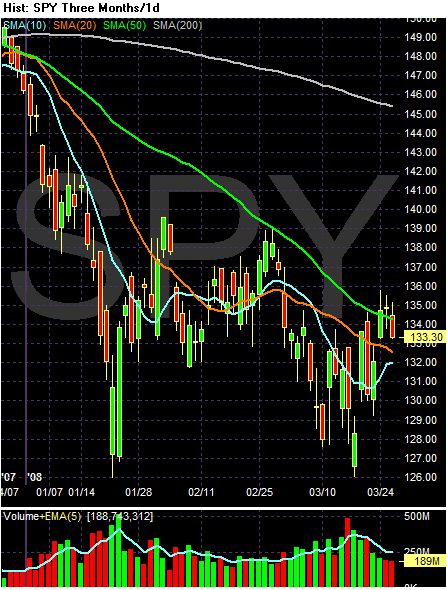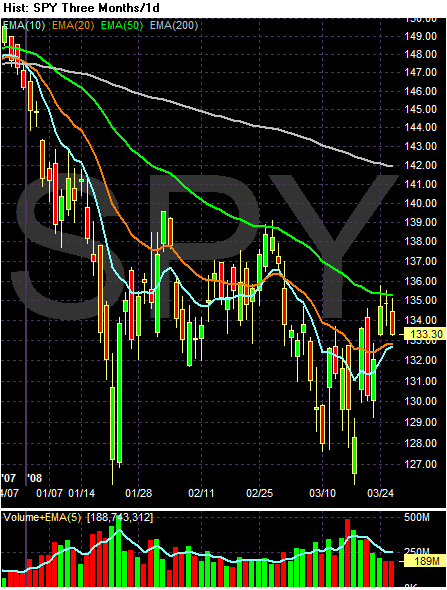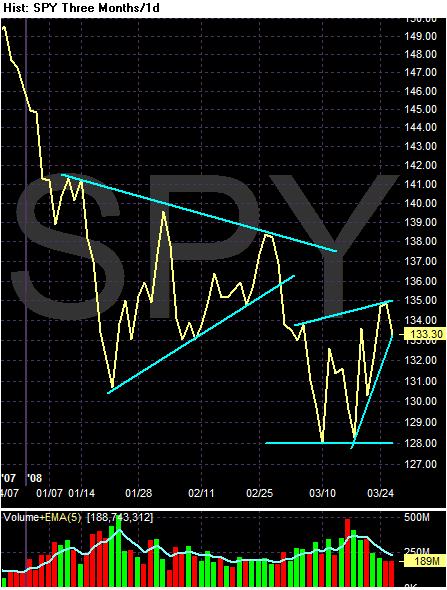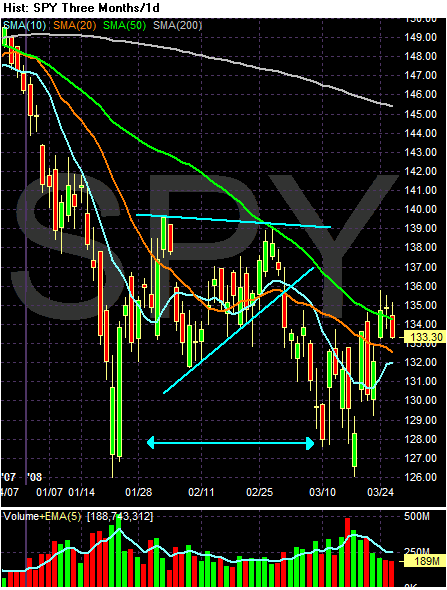
Above is the chart using simple moving averages. These SMAs give equal weight to all the numbers in the calculation, assuming that every number is equally important. Notice the following:
-- The long term SMAs (the 50 and 200) have continually moved lower, indicating the market's overall trend is down.
-- In February, the 10 day SMA was level and it intertwined with the 20 day SMA, giving hope to the bulls that a possible rally was underway.
-- Notice there is a great deal of buying support at the 126/127 level, indicating traders think this is fair value. We'll have to get through another earnings quarter before this changes.

Above is a chart with exponential moving averages, which give more weight to later/more recent numbers. This calculation assumes that what happened yesterday is more important than what happened a week ago. Notice the following subtle differences with the SMA chart:
-- The SMAs maintained a very bearish orientation of the lower averages below the longer averages for a longer time.
-- The 10 day EMA only crossed the 20 EMA for a brief time in February as opposed to intertwining with it.
Now consider the following line chart:

Line charts can be helpful because they clear out excess noise and help to show the underlying trend. With the above chart, notice we clearly formed a consolidating triangle from the beginning of the year to the end of February. But what about now? The markets are less clear.

And finally, we return to the candle chart. Notice the following:
-- We have a pretty clear triangle pattern.
-- Do be have a double bottom where the arrows are pointing? Technically we may. The question is does the fundamental information back-up this conclusion? I think the answer to that question lies with the Fed's action last week and the market's belief that it is enough to prevent a financial meltdown or recession.